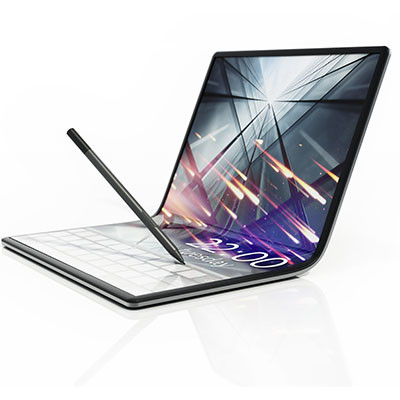BNMC Blog
Is Foldable Technology Worth All the Hype?
Foldable technology is still a relatively new thing in the smartphone market, but they are interesting and worth discussing in a costs-to-gains context. Let’s look at the true value these devices have for SMBs, who they are being marketed to, and what they might be capable of.
How Does Foldable Technology Work?
Foldable technology is not just for mobile devices, but it is by far the most prevalent option out there. It was first introduced a couple of years ago, and since it has given manufacturers and developers interesting opportunities to innovate. Basically, the form factor and user interface allow for some functionality that your typical smartphone cannot pull off. Here are the major components of today’s foldable display:
- Organic Light-Emitting Diode - Foldable devices use OLED displays because they can be made flexible. Unlike traditional LCDs (Liquid Crystal Displays), OLEDs emit their own light, making them more flexible and thinner.
- Polymer Substrates - Flexible OLED displays use polymer substrates instead of glass. These substrates are more pliable, allowing the display to bend without breaking.
The combination of powerful processors and graphics systems, as well as a need in the market, has led to the rise of these devices. That said, manufacturers do have to carefully consider certain variables to help users get the most out of these devices. For example, affordability must be considered, as well as how well the hinges hold up over time and application optimization.
How Do Foldables Hold Up?
The Pluses
Foldable devices have more screen to take advantage of, allowing users to do more with the available real estate. Particularly, productivity apps can make great use of the space.
However, this is the only real improvement to note, and even then, it’s kind of pushing it, as developers have not necessarily created better ways to use the space as of yet. However, it pushes innovation, which is valuable in and of itself.
The Negatives
Some of the biggest issues with foldable tech stem from what makes it stand out: the form factor itself. Manufacturers and users alike need to consider how the device holds up to water and dust, the hinges on the screens themselves, and the crease that forms on foldable displays. The price point is also a bit high considering the questionable return on investment–at least, at this time of writing (the Samsung z Fold 5 is valued at $1,800, for example).
That’s just a bit too much to pay for a smartphone, considering that it’s not a substantial technical upgrade and there are various form factors that contribute to its fragility.
All that said, foldable devices might be a good fit for businesses that can get a sustainable return on investment for them. To learn more about this, you can call us at (978) 482-2020 today.




Comments